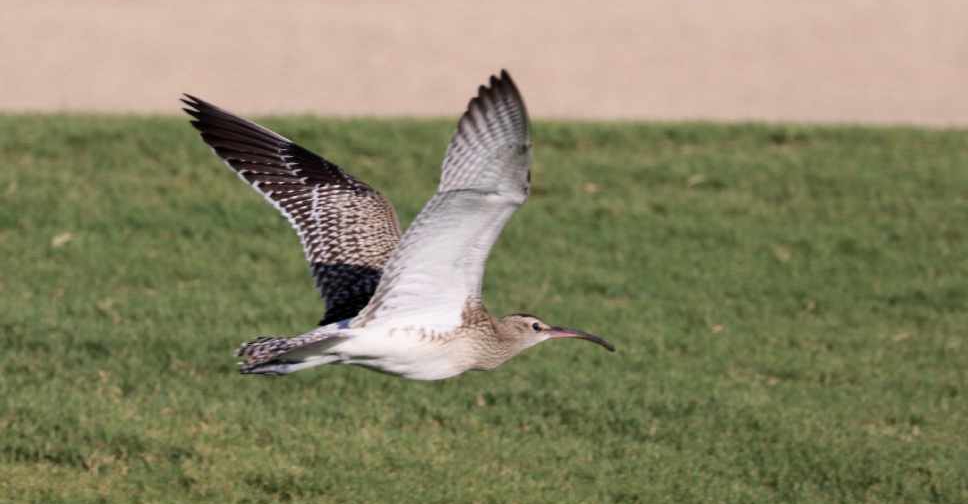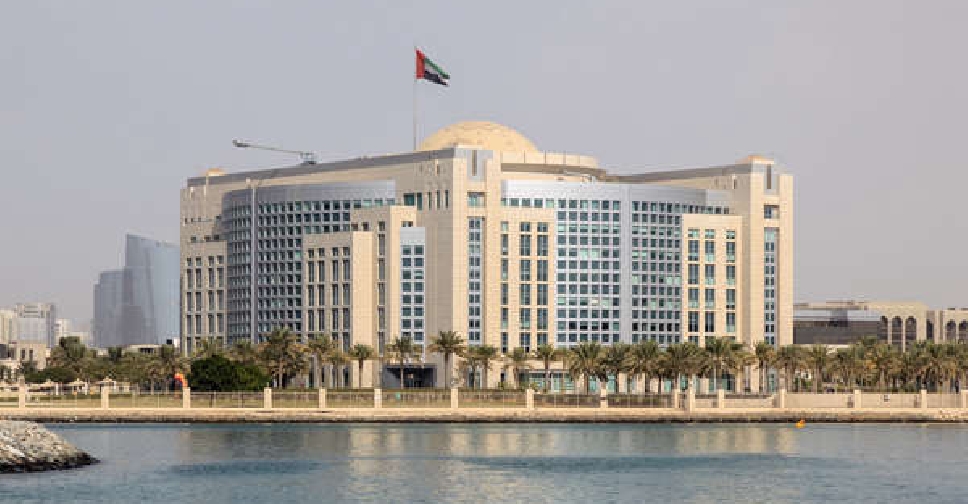
As the autumn bird migration gets under way, one of the rarest birds in the world has been spotted on the Saadiyat Beach Golf Course in Abu Dhabi.
The bird, a Steppe Whimbrel, Numenius phaeopus alboaxillaris, is an extremely rare sub-species of the widespread Whimbrel, which regularly passes through the Emirates in spring and autumn.
The bird seen in Abu Dhabi was a juvenile, born this year.
It is the first time a juvenile Steppe Whimbrel has been seen anywhere in the world.
Rarest of the five Whimbrel sub-species, Steppe Whimbrels are estimated to have a global population of only around 100 birds.
Steppe Whimbrels were first described in 1921 from a bird collected in Mozambique in 1906, although birds later shown to be of this sub-species had been collected in Russia as far back as the middle of the 19th Century. Never common, it was declared Extinct in 1994.
A tiny population was re-discovered in its Southern Russia breeding grounds in 1997, with a few scattered confirmed records there up until 2009, but none since.
No more than 19 breeding pairs have ever been located, at three breeding sites, and the maximum number ever seen together is 11, on migration on the Caspian Sea.
In 2016, two wintering adult birds were found in Maputo, Mozambique.
In subsequent years, sightings of only seven birds have been confirmed from Mozambique. In 2018, a single bird, fitted with a satellite tag, was tracked in 2018 northwards to Yemen, where the tag fell off.
The discovery in the UAE capital was made on 29th August by two members of the Emirates Bird Records Committee, EBRC, Oscar Campbell and Simon Lloyd.
The bird was sighted again on 31st August by another EBRC member, Peter Hellyer, and was still present on 11th September.
It is now believed to have continued on migration on its way to East Africa.
Steppe Whimbrels differ from other Whimbrel sub-species in having a largely white underwing, lacking the dark bars and marks that are otherwise typical of whimbrels.
Since the discovery of the Mozambique birds, Campbell and Lloyd have been closely examining whimbrels passing through the UAE in autumn and spring, hoping to find one.
"On 29th August, we were studying around 20 whimbrels on the Saadiyat Beach golf course. We were stunned when one flew off showing the distinctive white wings, clearly different from the other birds," Campbell and Lloyd say.
"We immediately realised the potential significance of this so we concentrated on observing the bird and obtaining photographs, allowing us to check the key identification features."

 UAE welcomes ceasefire between Lebanon and Israel
UAE welcomes ceasefire between Lebanon and Israel
 UAE President pardons 2,269 prisoners ahead of Eid Al Etihad
UAE President pardons 2,269 prisoners ahead of Eid Al Etihad
 UAE condoles family of murdered Moldovan-Israeli national
UAE condoles family of murdered Moldovan-Israeli national
 UAE releases rules for Eid al-Etihad celebrations
UAE releases rules for Eid al-Etihad celebrations
